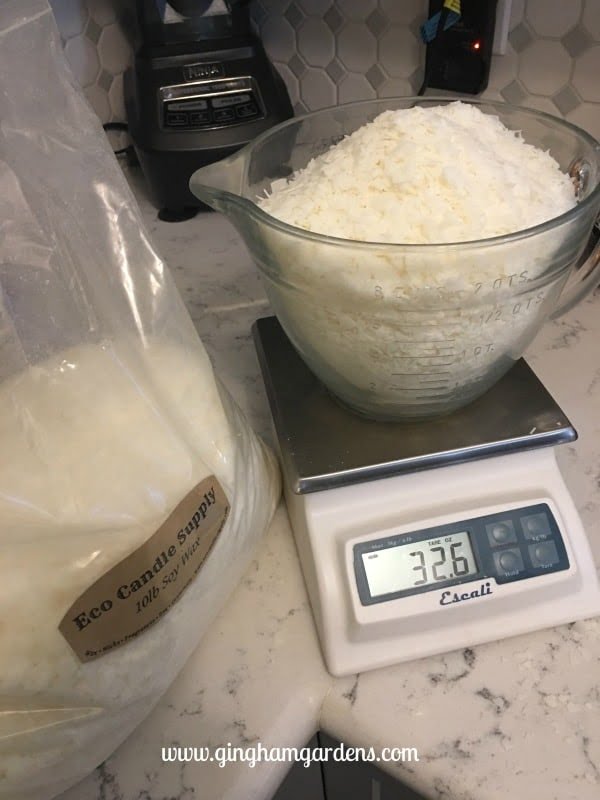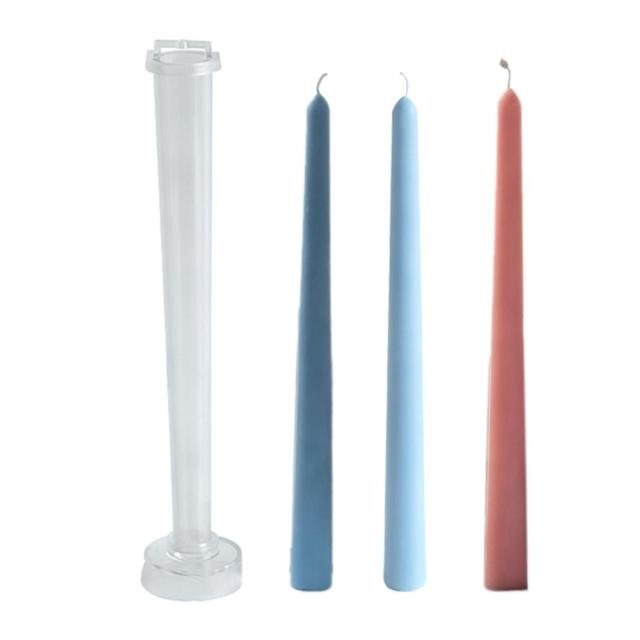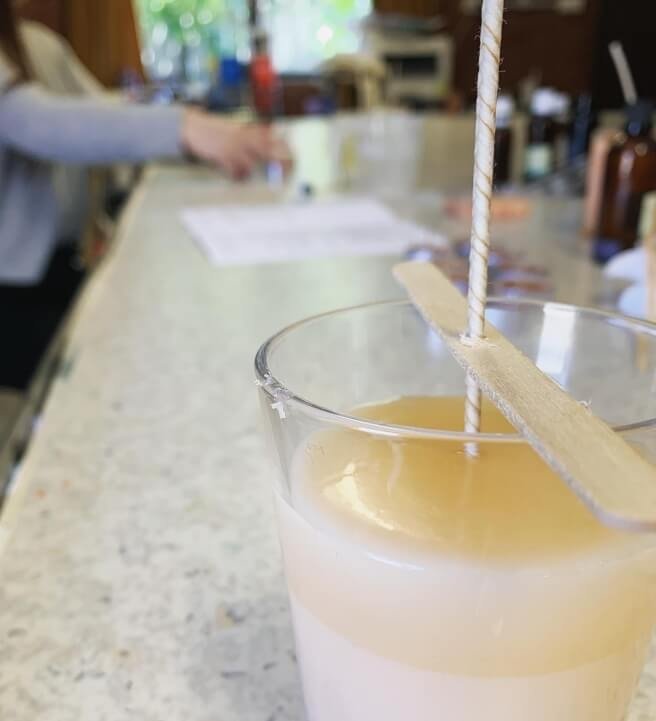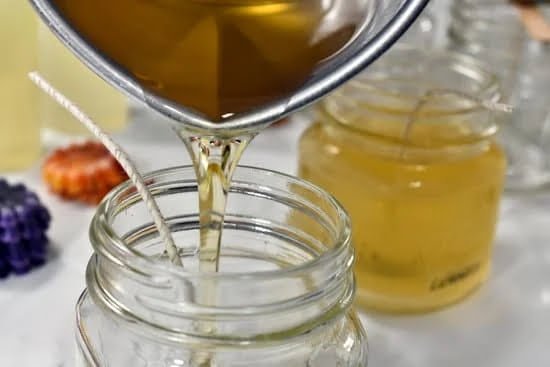Introduction: Exploring the world of candle making and the importance of choosing the right ingredients to melt in your warmers.
Candle making is an art form that allows individuals to express their creativity while creating a warm and inviting atmosphere. Whether you are a beginner or an experienced crafter, understanding how to choose the right ingredients for melting in your warmers is crucial to achieving the desired scent and quality in your candles. In this article, we will delve into the world of candle making, highlighting the significance of selecting the appropriate materials to melt in your warmers.
Before we dive into the specifics, it is essential to introduce the concept of using warmers in the candle-making process. Warmers play a vital role in melting various ingredients and infusing them into the wax to create scented candles. They provide a controlled heating source that ensures consistent temperature distribution throughout the melting process. With different types and designs available, warmers allow crafters to have greater control over their candle creations.
In this comprehensive guide, we will explore different types of waxes, fragrance oils, natural ingredients, scented additives, and unique ideas that can be melted in your warmers during candle making. Each choice offers its own benefits and considerations when it comes to scent throw, longevity, sustainability, and personal preference.
By understanding these options and their characteristics, you can elevate your candle-making experience and produce truly delightful creations. So let’s embark on this journey together and discover what you can melt in your warmers while making candles.
Essential Supplies
Types of Warmers
When it comes to candle making, having the right supplies is crucial. One essential supply that plays a significant role in the process is a warmer. Warmers are devices used to melt various ingredients needed for candle making, such as wax melts and fragrance oils. There are different types of warmers available in the market, each with its own set of benefits.
One common type of warmer is the electric wax warmer. These warmers use electricity to heat up and melt the ingredients placed on top of them. They are often preferred by candle makers because they provide a consistent and controlled heat source, ensuring that the ingredients melt evenly without overheating or burning.
Another popular option is a tealight wax warmer. These warmers utilize a small tealight candle as their heat source. The flame from the tealight heats up a small dish or tray where the ingredients are placed, causing them to melt gradually. Tealight warmers are favored for their simplicity and affordability, making them an excellent choice for beginners or those on a budget.
The Benefits of Using Warmers
The use of warmers in candle making offers several benefits that make them essential supplies for any candle maker. Firstly, using warmers provides a safe and convenient way to melt ingredients compared to other traditional methods such as double boilers or stovetop heating. Warmers eliminate the risk of direct contact with open flames or hot surfaces, preventing accidents and injuries.
Additionally, using warmers allows for precise temperature control throughout the melting process. This control ensures that ingredients like wax melts and fragrance oils are melted at the optimal temperature without being overheated, which can affect their quality and scent throw in the final candles.
Furthermore, warmers offer versatility in terms of design and functionality. They come in various styles, sizes, and materials to suit different preferences and needs. Some warmers even feature adjustable heat settings or timers, providing further customization options for candle makers.
Wax Melts
Introduction to Wax Melts
Wax melts have become a popular choice for candle making enthusiasts due to their ease of use and versatility. These small wax cubes or shapes are specifically designed to be melted in warmers, releasing fragrance as they melt.
They offer a mess-free alternative to traditional candles, as there is no need for wicks or containers. In this section, we will delve into the different types of wax melts available in the market and explore the pros and cons of each type.
Types of Wax Melts
When it comes to choosing wax melts for your candle making ventures, you will come across three main types: soy, paraffin, and beeswax. Each type has its own unique characteristics, benefits, and considerations.
- Soy Wax Melts: Derived from soybean oil, soy wax is a natural and renewable resource. It is known for its clean burning properties and ability to hold fragrance well. Soy wax melts tend to have a longer burn time compared to other types of waxes.
Additionally, they have a lower melting point, which means they release fragrance more quickly when melted in warmers. However, soy wax can be softer than other waxes and may require some experimentation with temperature control during the melting process. - Paraffin Wax Melts: Paraffin wax is derived from petroleum byproducts and is widely used in the candle making industry. It has a high melting point which results in slower fragrance release when compared to soy wax melts. However, paraffin wax offers excellent scent throw capabilities and can create highly fragrant candles. It also provides a smooth and glossy finish that many candle makers prefer.
- Beeswax Melts: Beeswax is renowned for its natural fragrance and aesthetic appeal. These melts are made from the beeswax collected from honeycomb cells in beehives. With its high melting point, beeswax melts have a slow release rate and provide a subtly fragrant experience. Beeswax is often favored by those seeking an all-natural option for their candles.
Pros and Cons of Each Wax Type
While all three types of wax have their merits, it is important to consider the pros and cons before selecting the right one for your candle making project.
Soy wax offers eco-friendly properties and a quick fragrance release but may require extra care during the melting process. Paraffin wax provides strong scent throw and a smooth finish but is derived from non-renewable resources. Beeswax offers natural fragrance and aesthetic appeal but may be more expensive compared to other options.
Ultimately, the choice of wax melt depends on your personal preferences, budget, and desired outcome for your candles. Experimenting with different types of wax can lead to unique combinations that perfectly suit your needs as a candle maker.
Fragrance Oils
Fragrance oils play a crucial role in candle making as they are responsible for adding enticing aromas to the candles. These oils can easily be melted in warmers before being incorporated into the wax. When it comes to fragrance options, there is a wide variety available in the market that caters to different preferences and moods.
One popular category of fragrance oils is floral scents. These fragrances mimic the natural smells of flowers such as rose, lavender, jasmine, and lilac. Floral scents are often enjoyed for their calming and soothing properties, making them perfect for relaxation or creating a romantic ambiance.
On the other hand, fruity scents offer a burst of freshness and vitality to candles. With options like citrus blends, tropical fruits, or juicy berries, these fragrances can uplift mood and energize any space. Fruity scents are particularly popular during summer seasons or as a pick-me-up throughout the year.
For those seeking atmospheric and earthy aromas, woodsy fragrances are an ideal choice. Oak, cedarwood, sandalwood, and pine are some common examples that bring warmth and coziness to any room. Woodsy scents create a comforting atmosphere reminiscent of nature’s tranquility.
Exotic fragrances open up realms of exploration with their unique combinations that transport you to far-off destinations. Think about unique blends of spices like cinnamon and clove along with exotic florals like patchouli or ylang-ylang. These aroma profiles add an element of sophistication and intrigue to your candles.
To create their own signature fragrances, candle makers can also experiment with blending different fragrance oils together. By combining floral, fruity, woodsy, and exotic scents in unique ratios, one can craft custom aromas that evoke specific moods or environments. It is essential to keep track of the quantities used in each blend to reproduce the desired scent consistently.
Overall, fragrance oils offer endless possibilities for candle makers to create captivating scents that enhance their candles’ appeal. Whether you prefer delicate florals, refreshing fruits, comforting woods, or intriguing exotics, there is a fragrance oil available to suit every preference and occasion. So let your creativity flow and explore the world of fragrance oils to elevate your candle making process.
Natural Ingredients
In recent years, there has been a growing trend in candle making towards using natural ingredients to achieve unique and environmentally friendly scents. These natural ingredients can be melted in warmers to release their aromas and enhance the overall sensory experience of the candles. Some examples of these natural ingredients include dried flowers, citrus peels, herbs, and spices.
One benefit of using natural ingredients in candle making is the opportunity to create custom scents that cannot be replicated with synthetic fragrances. By melting dried flowers such as lavender, rose petals, or chamomile in warmers, candle makers can infuse their products with delicate floral aromas that have a calming and soothing effect. Similarly, citrus peels like lemon or orange can add a refreshing and uplifting scent to candles.
Herbs and spices are also popular choices when it comes to natural ingredients for candle making. Ingredients like cinnamon sticks, cloves, or vanilla beans can be melted in warmers to create warm and cozy scents that evoke feelings of comfort and relaxation. Additionally, herbs like sage or eucalyptus can bring a touch of freshness and promote a sense of well-being.
Using natural ingredients not only offers unique scents but also appeals to environmentally conscious consumers who prefer products made from sustainable sources. These consumers are often concerned about reducing their carbon footprint and avoiding synthetic chemicals commonly found in commercial candles. By utilizing natural ingredients in candle making, manufacturers can cater to this demand for eco-friendly products while offering a wider variety of enticing scents.
| Natural Ingredient | Benefits |
|---|---|
| Dried Flowers | Calming and soothing aromas |
| Citrus Peels | Refreshing and uplifting scents |
| Herbs and Spices | Warm, cozy, and comforting aromas |
Scented Additives
When it comes to creating unique and enticing candle aromas, scented additives play a crucial role. These additives, such as essential oils, not only enhance the fragrance but also offer therapeutic benefits. Essential oils are highly concentrated plant extracts that can be mixed with melted wax in warmers to infuse candles with delightful scents.
One of the advantages of using essential oils as scented additives is their wide range of fragrances. From calming lavender and invigorating citrus to earthy patchouli and floral rose, essential oils provide numerous options for creating personalized candle scents. These natural essences also have potential health benefits, including stress relief, mood enhancement, and relaxation.
When using essential oils as scented additives in candle making, it’s important to consider the ideal dilution ratio. Most experts recommend using approximately 1 ounce of essential oil per 1 pound of wax for optimal fragrance throw without overwhelming the candle. However, this ratio may vary depending on the potency of the oil and personal preference. It’s always advisable to conduct small test batches before committing to larger quantities.
In addition to essential oils, other scented additives that can be used in warmers include fragrance oils and botanical extracts. Fragrance oils are synthetic aromatic compounds specifically designed for candle making and offer a wide variety of scent choices that are long-lasting. On the other hand, botanical extracts like vanilla bean or almond extract can add subtle natural fragrance notes to candles.
Adding scented additives not only allows for endless creativity in candle making but also offers a sensory experience when lighting each unique creation. Whether you’re looking for a soothing atmosphere or an energizing environment, choosing the right scented additives can elevate your candle making experience to new heights.
| Scented Additive | Ideal Dilution Ratio |
|---|---|
| Essential Oils | Approximately 1 ounce per 1 pound of wax (may vary) |
| Fragrance Oils | Depends on the manufacturer’s instructions |
| Botanical Extracts | Usually a few drops per pound of wax (to taste) |
Unique Ideas
When it comes to making candles, the possibilities for creating unique and enticing aromas are endless. While there are plenty of traditional options like wax melts and fragrance oils, why not think outside the box and experiment with unconventional ingredients? Here are some creative ideas for melting different ingredients in warmers to create unique candle aromas:
- Coffee Beans: If you’re a coffee lover, why not infuse your candles with the rich and indulgent aroma of freshly roasted coffee beans? Simply place a handful of whole coffee beans in your warmer and let them slowly release their fragrance as they melt. Not only will this create a cozy atmosphere reminiscent of your favorite coffee shop, but it can also help mask any unwanted odors.
- Chocolate Chips: Indulge your senses with the sweet scent of melted chocolate by adding a handful of chocolate chips to your warmer. As they melt, they will release a delicious aroma that is perfect for creating a relaxing and comforting ambiance. This idea is especially great for those who have a sweet tooth or want to add a touch of decadence to their candle collection.
- Tea Leaves: Why limit yourself to traditional scents when you can explore the captivating world of tea? Experiment with different types of loose leaf tea by placing them in your warmer and enjoying the aromatic experience as they slowly release their unique fragrances. From soothing herbal blends to invigorating black teas, there’s something for every mood and preference.
These are just a few examples of how you can get creative with ingredients in your warmers to produce one-of-a-kind candle aromas. The key is to think outside the box and let your imagination run wild. Remember, experimenting is half the fun when it comes to candle making.
Before trying any unconventional ingredients in your warmers, it’s important to ensure that they are safe for melting. Avoid using anything that may be flammable or produce toxic fumes when heated. Always conduct a small test to ensure that the ingredient you are using melts properly and does not interfere with the wax or other additives in your candles.
Safety and Precautions
When it comes to melting ingredients in warmers for candle making, safety should always be a top priority. Handling hot wax and fragrances can present certain risks if not done with caution. To ensure a safe and enjoyable candle making experience, here are some important safety measures to keep in mind.
First and foremost, it is crucial to handle hot wax with care. Always use heat-resistant gloves or mitts when dealing with melted wax to protect your hands from burns. Additionally, it’s important to have a designated workspace that is clear of any clutter or flammable objects, as well as ensuring that there are no children or pets nearby who could accidentally come into contact with the hot wax.
Temperature control is another vital aspect of candle making safety. It’s essential to monitor the temperature of the melted wax using a reliable thermometer throughout the process. Overheating the wax can lead to fires or even explosions, so be sure to follow the recommended melting temperatures for your specific wax type.
Proper ventilation is also key when melting ingredients in warmers. Some fragrance oils or natural additives used in candle making can release fumes that may be harmful if inhaled excessively. Make sure you have good airflow in your workspace by opening windows or using fans. If possible, consider wearing a mask to further protect yourself from any potentially harmful fumes.
It’s important to be aware of potential hazards during the candle making process and take steps to prevent accidents. Never leave your warmer unattended while melting ingredients, as this increases the risk of fire hazards exponentially. Always keep a fire extinguisher nearby and know how to use it properly.
By following these safety precautions, you can enjoy a safe and rewarding candle-making experience. Remember that accidents can still happen, so it’s always a good idea to educate yourself on first aid procedures for burns and keep a first aid kit readily available. The joy of creating beautiful and fragrant candles should not come at the expense of safety, so take the necessary precautions to ensure a safe and enjoyable candle-making journey.
Conclusion
In conclusion, the process of melting ingredients in warmers for candle making is a crucial step that determines the final outcome of your candles. Throughout this article, we have explored the various options available to you when it comes to selecting the right ingredients. From essential supplies and wax melts to fragrance oils and natural ingredients, there are numerous choices to consider.
When choosing your ingredients, it is important to understand the pros and cons of each option. Soy, paraffin, and beeswax all have their unique qualities, and different fragrance oils offer an array of scents to explore. Natural ingredients not only provide environmentally conscious consumers with an appealing choice but can also add a unique touch to your candles.
Additionally, we have discussed the option of using scented additives such as essential oils that can both enhance the aroma of your candles and provide therapeutic benefits. Experimenting with unconventional items like coffee beans or tea leaves can lead to exciting and one-of-a-kind candle aromas.
Lastly, it is crucial to prioritize safety measures throughout the entire candle making process. Proper handling, temperature control, and ventilation are all important aspects of ensuring a safe experience. By following these precautions, you can enjoy the process while minimizing any potential hazards.
As you embark on your candle making journey, we encourage you to be adventurous and experiment with different options as mentioned in this article. Share your experiences in the comments section below. Remember, by selecting the right ingredients for melting in warmers, you are taking a significant step towards creating beautifully scented candles that will delight both yourself and those who receive them as gifts.
Frequently Asked Questions
What can you put in a candle warmer?
A candle warmer is designed to melt and release the fragrance of a scented candle without the need for an open flame. To use a candle warmer, you can place various types of candles on it, such as jar candles, pillar candles, or even tea lights.
It is essential to ensure that the candle fits securely and correctly on the warmer so that it does not tip over or create any safety hazards.
What can I do with leftover wax in my warmer?
When you have leftover wax in your candle warmer, there are several things you can do with it rather than throwing it away. One option is to let the wax solidify and then remove it from the warmer using a butter knife or similar tool.
You can save this hardened wax and use it later by either placing it back into a clean container or re-melting it down to make new candles. Another idea is to mix different leftover wax scraps together to create unique and personalized candles with varying colors and fragrances.
Do candle warmers melt the whole candle?
Candle warmers work by gently heating the bottom of a candle, which causes the wax to melt and release its scent into the air, creating an inviting ambiance without producing an open flame. However, while candle warmers do melt some parts of the candle (usually around the wick area), they typically do not melt the entire candle due to their design.
Instead, they slowly heat up the lower portion of the candle until enough fragrance is released while leaving most of the wax intact. This allows for prolonged use of scented candles without burning through them quickly like traditional burning methods would.

Welcome to my candle making blog! In this blog, I will be sharing my tips and tricks for making candles. I will also be sharing some of my favorite recipes.





